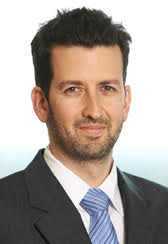How sovereign funds’ contrarian style outperforms
(pictured: Elliot Hentov)
Sovereign Wealth Funds invest in a contrarian manner compared with fund managers and super funds, according to new research from State Street Global Advisors. They take bigger bets on growth assets and use their size and longer-term liabilities time horizon to best advantage. Everyday investors can learn from them.
The research paper, written by Elliot Hentov, the head of policy and research for SSgA’s Official Institutions Group, confirms three major assertions about the investment behaviour of SWFs:
- They chase more yield. The rapid growth of assets over the past decade- plus has been accompanied by a shift into higher-risk and higher-yield asset classes. By and large, this parallels broader market trends among large asset owners, but it also suggests that as these relatively young institutions evolve, they increasingly leverage their long-term investment horizon to operate higher-yielding and less liquid investment strategies.
- They use their size. The larger funds tend to accentuate overall trends. More assets under management seem to give SWF investors more freedom and a greater ability to be early movers. While true in the aggregate, this does not necessarily apply consistently. For example, the world’s largest SWF, Norway’s Government Pension Fund, embraced public equities early but has been slow to integrate private investments into its portfolio.
- They appear to be contrarians. “While we could point to only one recent time period,” Hentov says, “the opposite trends among SWFs and the larger asset management industry are remarkable. We can only speculate on the reasons for this divergence, but long-term thinking and fewer tangible liabilities presumably allow SWFs to detach investment decisions from short-term market cycles.”
The changes in asset allocation between the SWFs studied in the research and average fund managers between 2012 and 2014 make for a stark contrast. Fund managers reduced their allocations to cash and fixed interest by about 5 per cent while SWFs added 2 per cent to theirs. Managers increased their allocations to listed equities by nearly 12 per cent while SWFs reduced theirs by 4 per cent and managed reduced their exposures to private markets by 3 per cent as SWFs increased theirs by 2 per cent.
The research is based on proprietary research plus data from the Sovereign Wealth Centre and performance data from the IMF. SSgA uses the IMF’s more generally accepted definition of a SWF.
The Sovereign Wealth Centre is a subscription information service run by the Institutional Investor media organisation. Its SWF database is larger than most because it includes some government funds, such as Australia’s QIC, which most people would not think of as an SWF.
However, it does also include Australia’s newest fund, the Western Australian Future Fund, which was set up by the WA Government in December 2012 to harness some of the money from mining royalties and has about $870 million invested, remaining heavily overweight cash and fixed interest as at June 2015.










